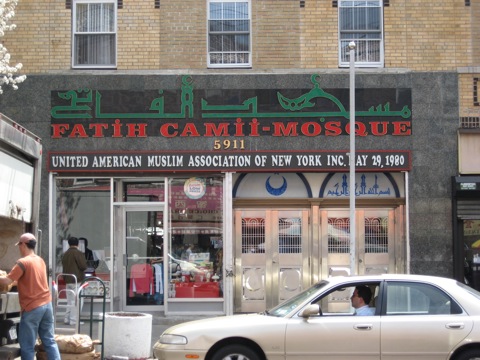Chinatown Brooklyn: Evolution
From Decoding New York
| Introduction |
| Manhattan |
| * Evolution |
| * What's Real |
| * Here v. There |
| * Economy |
| Flushing |
| * Evolution |
| * What's Real |
| * Here v. There |
| * Economy |
| Brooklyn 8th Avenue |
| * Evolution |
| * What's Real |
| * Here v. There |
| * Economy |
| Comparison |
| * Photo Gallery |
| * Sources
|
Called Eighth Avenue by Cantonese speakers as a translation of Sunset Park, the name "Eighth Avenue" signifies luck and prosperity. Because of its large Asian, mostly Chinese, population, Eighth Avenue is also known as the Brooklyn or little Chinatown. Once inhabited by European residents, white immigrants began to move out of the neighborhood as residences in the suburbs became accessible to them. As the area slowly emptied, immigrant groups such as Dominicans and Puerto Ricans moved in, with Chinese immigrants following soon after. The neighborhood flourished as Chinese immigration and population growth tripled between 1980 and 1990. Within the Chinese community, there is a sizable number of Fuzhounese, as well as people from Hong Kong. Asians (mostly Chinese), Puerto Ricans, Mexicans and Dominicans comprise half of the immigrant population in Eighth Avenue.
Eighth Avenue is seen more as an extension of Manhattan Chinatown than a new Chinatown with a unique character. This characteristic of Eighth Avenue is unlike Flushing, which, although called a satellite Chinatown, is more of a discrete neighborhood which is defined by language. Eighth Avenue has grown due to the success of a few first immigrants, which encouraged more people to make a new start in Brooklyn. More educated immigrants decided to live in Brooklyn, which further strengthened the area. However, along with a healthy economy and population came more traffic, chaos and crowding. Because of the extreme traffic problems that have plagued the area, there have been proposals to make Eighth Avenue a one way street. This change may alter property values and somewhat disperse the community which is currently concentrated on one street.
In addition to the many Chinese institutions, there are several mosques located directly in the heart of Eighth Avenue, adjacent to restaraunts and grocery stores. These mosques are remnants from previous immigrant populations, who had also been attracted to Eighth Avenue. Though many Muslims from Eighth Avenue now live in neighborhoods such as Bay Ridge and Fifth Avenue, the still-standing mosques serve as a reminder of the neighborhood's ethnic past.
